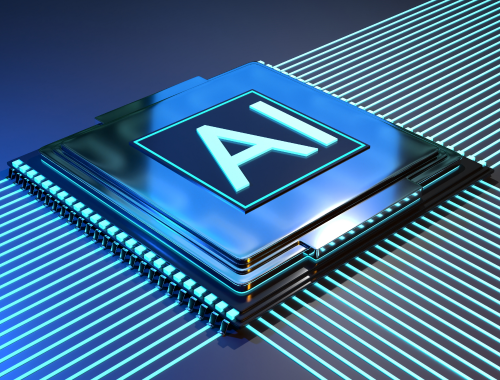Difference Between Narrow AI and General AI
AI is the new buzzword these days; it’s all around us. The dominance of AI tools like ChatGPT, Bard, and Bing AI has proved that AI is here to stay. We’re flooded with information, articles, and opinions about AI. Both experts and amateurs are trying to imagine a future shaped by this powerful technology. With so much AI-related information, it’s getting harder to understand what AI really is.
In reality, most of us don’t use the term “AI” correctly. We all know that the world is changing rapidly, so it’s vital to think carefully about our current technological landscape if we want to succeed in the future. To better understand AI, we first need to learn about the different types of AI.
In this article, we’ll talk about and break down the differences between narrow AI and general AI to help understand what the future is likely to hold.

What is Narrow AI?
Artificial narrow intelligence (ANI), also called narrow AI, is a specific type of AI that is programmed to perform a singular or limited task. It’s also known as weak AI because it operates under limited constraints and doesn’t mimic human-like intelligence. Narrow AI is AI that is able to implement a small portion of the mind. Most modern AI systems would fall into this category.
For instance, virtual assistants like Siri and Google Assistant are narrow AI because they do voice recognition and answer questions, but they can’t understand diverse topics like humans do. Take spam filters, for example, which only identify spam but can’t write emails or do other tasks beyond filtering.

What is General AI?
Artificial general intelligence (AGI), also called general AI, is a type of AI that has the ability to apply intelligence to any problem rather than just one specific problem. It’s also called “Strong AI” because it possesses human-like intelligence and can understand and perform various tasks just like a human would. AGI has broad knowledge and adaptability, not limited to specific functions like ANI.
For instance, AI has already won video games and chess, which is like following patterns or programs. When AI can solve these puzzling problems, we’ll have achieved general AI.
Practically speaking, AGI doesn’t yet exist in the real world. It’s a bit like imagining a robot that can do everything a human can, from cooking to fixing cars, but we’re not there technologically.
Narrow AI vs. General AI: Comparison Chart
Definition: Narrow AI, also known as weak AI, is a type of AI that is programmed to perform a singular task with limited constraints. It can very well perform one job efficiently but lacks the ability to adapt to tasks outside its predefined scope. General AI, also known as strong AI, is a type of AI that possesses human-like intelligence and can understand and perform various tasks just like a human would.
Data Requirements: Narrow AI systems rely heavily on large volumes of labeled data to perform specific tasks. These datasets serve as their training material, which allows them to recognize patterns and make decisions within their defined scope. General AI systems, however, are still a work in progress, and it is not yet clear how much data they will need to learn how to perform tasks.
Learning Capacity: Narrow AI systems do not have minds of their own. It’s like teaching a machine to recognize specific patterns or make predictions based on data relevant to its designated task. They are typically trained using supervised learning. General AI, on the contrary, can exhibit strong human intelligence. It is a rhetorical form of AI that has the ability to learn and adapt across different tasks and domains. This is just like how humans learn and apply knowledge from one area to another.
Capabilities: Narrow AI operates within predefined parameters, relying on algorithms and data. It doesn’t possess creativity or the ability to think outside the box. General AI, on the other hand, can generate new ideas, solve novel problems, and exhibit human-like adaptability, making it a game-changer in fields where innovation and versatility are essential.
Narrow AI vs. General AI: Comparison Chart

Summary
Narrow AI has made remarkable strides in recent years, enhancing everyday tasks. While Narrow AI isn’t fully intelligent, each advancement brings us closer to General AI. Narrow AI takes care of those dull, repetitive tasks we’d rather avoid. This isn’t just about convenience; it frees up our time and energy. Many existing systems that claim to use AI are likely operating as narrow AI focused on specific tasks. General AI, however, is a theoretical quest for a super-intelligent thinking machine that will outsmart humans, which is like a distant dream for now.
FAQs
What is the difference between generative AI and general AI?
Generative AI creates new content like art, text, or other media using generative models such as ChatGPT. General AI mimics human intelligence across tasks.
What is the difference between Weak AI and Narrow AI?
Weak AI is another term for Narrow AI, both of which specialize in specific tasks.
What are the two types of narrow AI?
Two types of Narrow AI are Reactive AI (task-specific) and Limited Memory AI (learns from data but not across tasks).
What is narrow AGI?
Narrow AGI is a hypothetical system with human-like intelligence in a limited domain.
What do you mean by narrow AI?
Narrow AI is AI that is able to implement a small portion of the mind. Most modern AI systems, like chatbots and virtual assistants, would fall into this category.
What are general-purpose AI and generative AI?
General purpose AI systems like ChatGPT are designed to perform different tasks in different domains with a pre-defined set of instructions. Generative AI systems are designed to create different forms of content, including text, images, and videos.
- Difference Between Caucus and Primary - June 18, 2024
- Difference Between PPO and POS - May 30, 2024
- Difference Between RFID and NFC - May 28, 2024
Search DifferenceBetween.net :
Leave a Response
References :
[0]Castrounis, Alex. AI for People and Business: A Framework for Better Human Experiences and Business Success. O’Reilly Media, 2019.
[1]Sabry, Fouad. Narrow Artificial Intelligence: Fundamentals and Applications. One Billion Knowledgeable, 2023.
[2]Jajal, Tannya D. “Distinguishing Between Narrow AI, General AI and Super AI.” Medium, 21 May 2018, medium.com/mapping-out-2050/distinguishing-between-narrow-ai-general-ai-and-super-ai-a4bc44172e22.
[3]Larkin, Zoe. “General AI vs Narrow AI.” Levity Blog, 16 Nov. 2022, levity.ai/blog/general-ai-vs-narrow-ai.
[4]Image credit: https://www.canva.com/photos/MAFb6iiKrgE-artificial-intelligence-represented-by-a-processor-and-machine-learning-3d-illustration/
[5]Image credit: https://www.canva.com/photos/MAD4bFl-3Gg-artificial-intelligence-ai-machine-learning-and-modern-computer-technologies-concepts-business-technology-internet-and-network-concept-/
